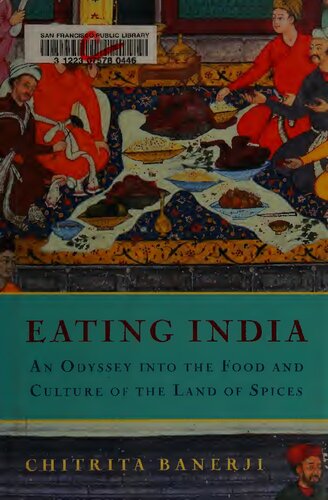

Most ebook files are in PDF format, so you can easily read them using various software such as Foxit Reader or directly on the Google Chrome browser.
Some ebook files are released by publishers in other formats such as .awz, .mobi, .epub, .fb2, etc. You may need to install specific software to read these formats on mobile/PC, such as Calibre.
Please read the tutorial at this link: https://ebookbell.com/faq
We offer FREE conversion to the popular formats you request; however, this may take some time. Therefore, right after payment, please email us, and we will try to provide the service as quickly as possible.
For some exceptional file formats or broken links (if any), please refrain from opening any disputes. Instead, email us first, and we will try to assist within a maximum of 6 hours.
EbookBell Team

4.8
34 reviewsThough it's primarily Punjabi food that's become known as Indian food in the United States, India is as much an immigrant nation as America, and it has the vast range of cuisines to prove it. In Eating India, award-winning food writer and Bengali food expert Chitrita Banerji takes readers on a marvelous odyssey through a national cuisine formed by generations of arrivals, assimilations, and conquests. With each wave of newcomers-ancient Aryan tribes, Persians, Middle Eastern Jews, Mongols, Arabs, Europeans-have come new innovations in cooking, and new ways to apply India's rich native spices, poppy seeds, saffron, and mustard to the vegetables, milks, grains, legumes, and fishes that are staples of the Indian kitchen. In this book, Calcutta native and longtime U.S. resident Banerji describes, in lush and mouthwatering prose, her travels through a land blessed with marvelous culinary variety and particularity.
REVIEWS:
"Skillfully moving backward and forward in time, Banerji, a culinary historian based in the U.S. whose previous books have explored the cookery of her native Bengal (Life and Food in Bengal), regards India with the intimacy of a native, the curiosity of an outsider and the broad vantage of an expatriate. In the course of her culinary tours across the subcontinent, she poses compelling questions about the nature of authenticity in a time of great flux, the mutability of tradition and the place of food in secular life and religious culture. For answers, she looks not only to the past but to the present as it unfolds in roadside shacks, sweet shops or a temple canteen, describing how outside influences such as colonialism and immigration have shaped India's regional cuisines. Early in this engaging work, Banerji recounts how whenever she invites Americans to her home for an elaborate meal, rather than sampling each dish in sequence-the better to appreciate its subtle flavors-her guests heap together meat, rice and